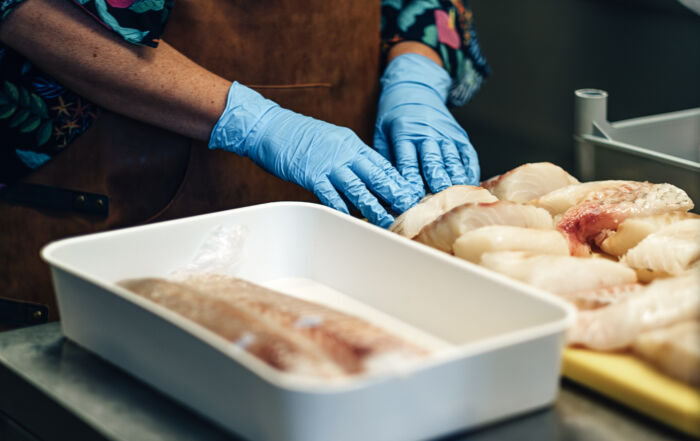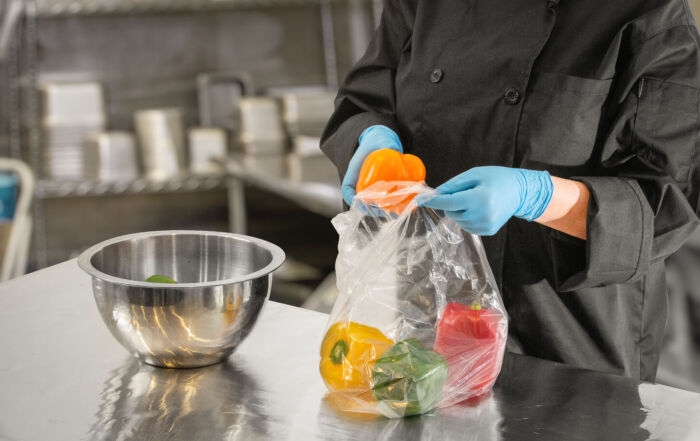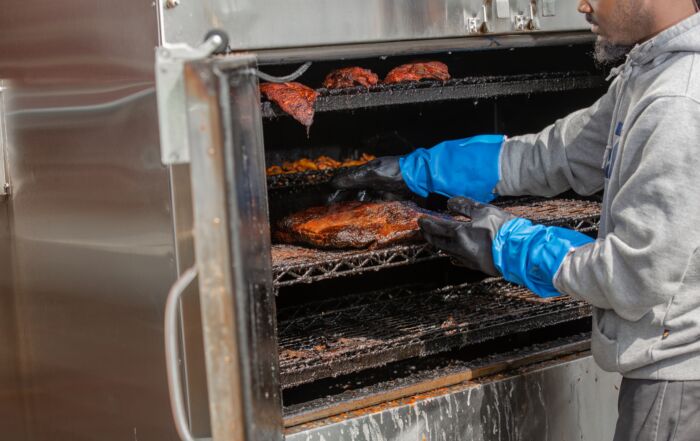$Money Matters: Balancing Costs and Food Safety Goals
Money matters in any foodservice operation – whether it be in hospitals, assisted living facilities, schools, restaurants, or any other type of operation. Managers are keenly aware that they must balance costs while meeting the goals of their operation. When balancing costs, we all know that food safety goals cannot be compromised. Our October webinar provided a great overview of ways to look at costs in foodservice, and how to balance those costs to meet your organizational objectives. Dr. Julie Boettger’s webinar is available for you to view at foodhandler.com/ . You can earn an hour of continuing education credit while learning great tips for improvements in your operation!
Today, I will highlight some of her main points from my perspective and discuss them in relation to food safety. First, she discussed identifying the operational goals and objectives for foodservice operation. These might include preparing and serving nutritious food safely while meeting the cost goals for your operation, such as food cost as a percent of revenue. It is important to keep operational goals and objectives in mind when you make decisions. Be sure to have a food safety goal articulated.
Second, she presented the concept of controllable and non-controllable costs. Controllable costs can be impacted by managerial decisions and include costs such as food cost, labor cost (to some extent), and supply costs. Non-controllable costs include such items as rent (or overhead), utility costs, and some fixed portions of labor costs. Our focus should be on the costs that we can control. In our May blogs, we covered important productivity measures, and discussed metrics that managers can use. Typical metrics for monitoring financial aspects of the operation include food and labor costs as a percent of revenue.
So, how can food costs be controlled in your operation? One way is to minimize food waste by purchasing in the correct quantities, turning inventory over to maintain the quality and freshness of foods, and doing correct forecasting and production management. Keeping records of activity (number of customers, menu selections, etc.) will go a long way in helping to reduce food waste. We will talk more about minimizing food waste in the second November blog—so stay tuned.
Another operational expense item is supply costs. How frequently are single-use items such as gloves, tissues, and tray liners purchased? While these items represent costs that are controllable, it is a balancing act to make sure the focus is not on costs, but rather the proper use (when and how) of the items. Foodservice employees are often very cost conscious. For example, we have seen parchment tray liners being reused. While it controls cost, it certainly is NOT a best practice because of the potential risk of cross contamination or cross contact for food allergens. As far as glove use goes, remember employees are supposed to remove gloves between tasks, and wash hands, and put on new gloves before starting another task that requires gloves. Gloves should NEVER be reused even if it does save money (in the short term)! We have seen, on multiple occasions, a glove taken off to handle money and then put on again, and gloves being washed. Short-term gains but long-term risk, as the costs of responding to a foodborne illness complaint are much more than the price of a pair of gloves! Make sure you are giving employees correct guidance and information. Focus on best practices rather than cost.
This leads to the third point referenced by Dr. Boettger in the webinar: employee training. We blogged about this very important part of management in our April blogs, but it never hurts to emphasize key elements that should be in place in every foodservice. First, have written standard operating procedures in place for routine tasks, and train employees on those procedures. Train on best practices for reaching the operation’s objectives. For example, temperature control for food throughout the flow of food within the operation should be stressed because it is directly related to food quality and safety. Make sure staff know (and follow) directions, such as recipes. A cook’s addition of extra ingredients to a recipe will certainly affect food costs! Also, communicate to employees the importance of them documenting what they did: how much they prepared, temperature controls, what was done with leftovers, etc. Based on this documentation/feedback, you as manager, can refine future production plans including how much to purchase and prepare.
The fourth, and final, point of particular importance was providing the appropriate tools and equipment needed to support employees in following their job tasks. It is up to managers to make sure that employees have the appropriate resources to do their jobs. That means having appropriate types and sizes of gloves, handwashing supplies, thermometers, etc.
Cost control is vital to any successful foodservice operation, but it is not the only objective. Nutrition, food safety, customer satisfaction, and many other objectives are important. It is a balancing act, but don’t risk safety. Risk nothing!
READ MORE POSTS
Preventing Norovirus in your Foodservice Operation
Norovirus is one of the leading causes of vomiting and diarrhea in the United States, [...]
Safe Handling of Leftovers in Foodservice Operations
In any foodservice operation, leftovers are inevitable. After managing a family-style restaurant, where all-you-can eat [...]
Turn your Health Inspector into your Food Safety Ally
For many foodservice operators, keeping up with evolving regulations can feel like chasing a moving [...]
Time and Temperature: Why 41°F to 135°F?
In one of my last blogs, I mentioned the temperature danger zone, or TDZ, as [...]










